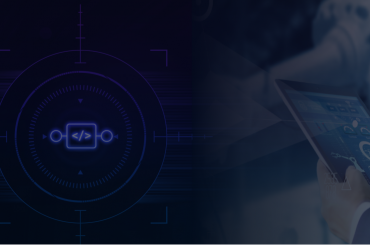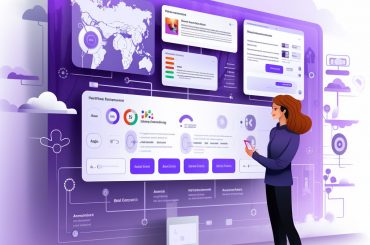Managing mobile devices across different business operations can be challenging. Still, it doesn’t change the fact that it’s essential for a business’s efficiency and success. There are various tools for such jobs, including enterprise mobility management (EMM), mobile device management (MDM), and unified endpoint management (UEM). That’s because they tend to address issues related to privacy and security.
These systems have been designed and launched to meet the growing needs for security and employee productivity. However, these tools have evolved significantly, making it challenging for enterprises to choose the right one and manage mobile devices. So, to help you out, we are sharing the differences between these three mobile asset management systems!
Enterprise Mobility Management (EMM)
Enterprise mobility management is software that allows enterprises to allow their employees to use apps and mobile devices with utmost security. Enterprise mobility security can also enhance the productivity of the employee. This is because the IT department will be able to securely provide data and apps for performing the work tasks. In addition, businesses with BYOD ecosystems can also manage the devices through EMM software.
EMM software actually grew out of MDM, which would only focus on device-level security and control. Back in 2015, Microsoft launched Windows 10, with which the EMM software provider companies branched into the UEM systems since they allow the IT department to manage the mobile devices and computer systems through one console. For those who don’t know, EMM has a combination of MAM, MDM, IAM, and MCM, which we are explaining below;
- MDM – it’s the base of the enterprise mobility suite. It depends on the combination of server software tats operating in the cloud or data center and agent app installed on the endpoint devices. Administrators use the management console of the server for setting the policies and configuring the settings. Also, the agent can implement the policies and configure the settings by connecting APIs and operating systems of mobile.
- MAM – it is responsible for providing security and management, which means the admins can set policies for an app or app subsets instead of the device. Some apps are designed with specific APIs, while some depend on device-level APIs in mobile operating systems. With MAM, businesses can control the access to data and apps rather than controlling the devices. It offers management of apps, removes and configures apps according to the business’s policy.
- MCM – it allows the IT department to control which apps have access to data and which apps can transmit the data
- IAM – it shows how, where, and when employees will use the data and apps while offering user-friendly features. In addition, some enterprise mobility management companies do add identity features, i.e., double or triple-factor authentication and easy sign-on
- Containerization – it has an important role to play where devices have personal as well as work data. It can establish different encrypted containers on the BYOD devices, which helps keep the business or corporate data safe from other data on the device. In addition, it ensures that the businesses don’t interact with the device’s data.
- Access & identity management – it is all about defining and managing the responsibilities and roles for different individuals to access the business resources to ensure no unauthorized person has access to the sensitive data. In addition, it can control how employees can use the data and apps, which eventually helps mitigate the security risks. In addition, it ensures a promising user experience and network services can be authenticated as well (VPN, emails, and Wi-Fi)
What’s most surprising is that these four components started as individual software products, but now they have become part of enterprise mobility management solutions. As far as evolving is concerned, the companies embraced the enterprise mobility solutions, which led to the productizing of EMM (it was done by adding MCM or MAM features). When Microsoft enterprise mobility suite has the APIs for Windows 10, it allowed the EMM solution to manage the computers just like it manages the tablets and mobile phones.
In addition, Apple enabled their laptops and computers to be managed like this. That being said, the EMM solution providers support the functionality which is marking the shift to UEM. That’s because UEM can manage various endpoints, such as IoT devices, tablets, endpoints, and wearables. This is the same reason EMM solution providers are now rebranding into UEM solution vendors.
Unified Endpoint Management (UEM)
Unified endpoint management (UEM) is the outcome of tech progression. UEM allows enterprises to manage different endpoints from one place (it uses a single yet fully integrated EMM solution). It can control and secure PCs, laptops, mobile phones, tablets, wearable, and printers. It has the capacity to cover nearly all capacities of the EMM. It depends on the MDM (mobile device management) apps and APIs of the operating systems.
To be honest, UEM seems to be a new system, but the tools are progressing pretty quickly. It offers a wide range of features and offers support to multiple devices. Not to forget, the software vendors can add more features for securing and managing multiple endpoints. What’s best about UEM is that it can simultaneously update and configure the mobile apps as well as a desktop while managing the IoT devices. It wouldn’t be wrong to say that it can consolidate the endpoint management.
UEM can be defined as the combination and evolution of EMM (yes, even the enterprise mobility software) and MDM. It has been designed as the centralized platform which a multi-faceted device architecture that actually removes the complications associated with integration. Also, it can handle various business scenarios, such as CYOD, BYOD, COPE, and COBO.
Mobile Device Management (MDM)
MDM involves remote management of the devices, allowing users to perform preset tasks on tablets and smartphones. It offers a wide range of features, such as location tracking, provisioning, security, and enrollment. In addition, if the device is lost or stolen, the IT departments can also wipe away the data. Generally, the basic-level tool can implement the security policies, perform real-time reporting and monitoring, and inventory tracking.
It’s an apt way of managing the devices owned by enterprises, but the majority of employees complained about carrying two different devices. For this reason, BYOD was implemented, so employees could shift from work to personal data and personal data to work data efficiently (it provided flexibility and freedom). It eventually led to the development of mobile application management (MAM), which is much like MDM, but it works for specific apps on the devices rather than focusing on the entire device.
Initially, MDM only focused on devices and didn’t have any capacity for content management and apps. However, it has now evolved to offer broader features to serve mobile users. Some of the capabilities include installing apps, wiping off the data, configuring the profiles for BYOD, and enforcing passwords. Not to forget, it can help manage and secure the devices across different operating system platforms through one console.
Choosing the Most Suitable Mobility Management Tool – Things To Consider
MDM vs. EMM vs. UEM has become a real confusion for businesses, and choosing one tool can be nearly impossible. However, in the section below, we are sharing some questions that will help select the right mobility management tool, such as;
- How easy is it to manage the privacy and trust-related concerns of employees?
- Which are the endpoints to be managed?
- Do you want on-premise deployment or cloud deployment? Which one is better?
- Do you need protection against data breaches and security issues?
- Do you have to add new technologies or apps for management?
- How many endpoints have to be managed?
- What is the organization size?
- Does your business have corporate devices or BYOD?
- Which management features are needed for employees?
- Is tech support required for the deployment of endpoints?
- Do you have to scale the mobile management system for responding to the growing needs of businesses?
Summing It Up
At this point, it wouldn’t be wrong to say that UEM, MDM, and EMM are different stages of evolution for mobility management and are designed to address privacy and security concerns. In simpler words, the primary difference in these systems is the scope of management. That’s to say because MDM focuses on the management of smartphones, EMM offers a comprehensive system for managing MAM, MSM, MCM, MEM, MDM, and access and identity management.
Not to forget, UEM can imply a rational system to integrate the management of various mobile devices and endpoints in one place. Once you understand the thin lines between the management tools, it’ll be easy to select the right software for mobility management. To summarize, the ultimate point is to identify, outline, and analyze the needs of organizations!





